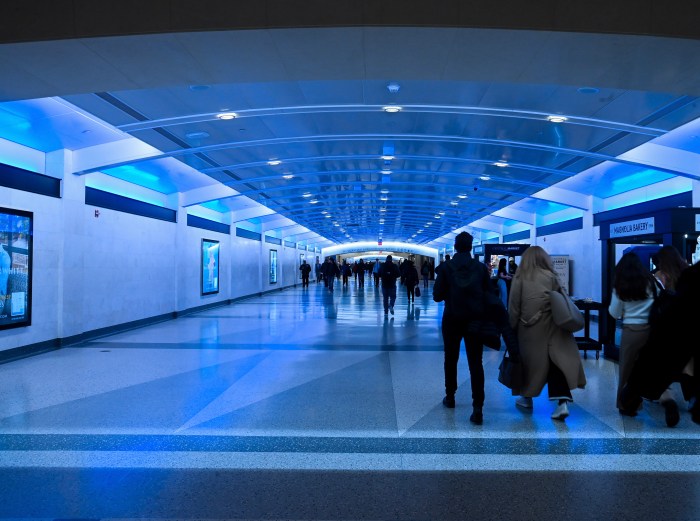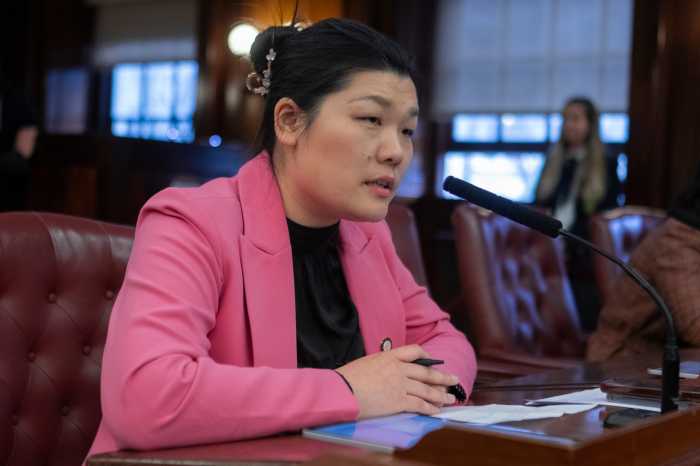
The MTA repeatedly broke the law as it renovated subway stations without adding elevators, according to a major lawsuit filed Wednesday.
Filed by the nonprofit Disability Rights Advocates, the suit charges that the MTA is in violation of Title II of the Americans with Disabilities Act, which requires that when a public transit facility is renovated in a way that impacts usability, it must be made accessible to people with disabilities “to the maximum extent feasible.”
“It does seem to us that the MTA needs to get its priorities straight,” said Susan Dooha, the executive director of the Center for Independence of the Disabled, one of the advocacy groups in the coalition backing the case. “We agree that renovations need to occur but they cannot continue to lop off their obligations pursuant to the Americans with Disabilities Act when they do that.”
The lawsuit filed in state court aims to expand on a recent federal decision where Judge Edgardo Ramos ruled that renovations to the 6 line’s Middletown Road station in the Bronx, which included new staircases but no elevators, triggered accessibility obligations under the ADA — no matter how much those measures would cost.
“We think that the legal reasoning of the case applies systemwide and that’s why we brought this case,” said Maia Goodell, the supervising attorney in the case.
Since the passage of ADA in 1990, the MTA’s subway system remains notoriously inaccessible with just about 25 percent of its 472 stations equipped with elevators. The authority has been under fire for years for not doing more to add more elevators across the system. The suit cites dozens of examples of the MTA completing station renovations that advocates believe should have triggered elevator installations.
In January, Malaysia Goodson, 22, died after falling down the stairs as she commuted through an elevator-less midtown subway station with her one-year-old daughter and stroller.
Goodson’s tragic death renewed outrage that came when the MTA embarked on its controversial “Enhanced Station Initiative” program, which brought new artwork, tiling and, in some cases, reinforced stairwells to select subway stations in the city. Critics said the MTA allocated $1 billion to the program for cosmetic rehabilitations that did nothing to broaden accessibility.
“What this lawsuit alleges is that the MTA has actually been engaged in a systematic practice of doing that type of renovation without even considering whether they can provide stair-free access, or improve stair-free access to the station,” Goodell continued. “Systemwide, they’ve been required to do that since the ADA was passed and for decades they’ve been ignoring the law.”
The MTA has more recently pledged to make a greater commitment to accessibility under Transit President Andy Byford. As the head of subways, buses and paratransit, Byford’s proposed “Fast Forward” plan includes a strategy to install elevators at 50 stations within a five-year window.
Those stations are expected to be outlined in the MTA’s soon-to-be-released capital plan for 2020 to 2024, though it is not clear how much the plan will cost and whether it will be fully funded as originally proposed.
“While we can’t comment on the pending litigation, the MTA has made an historic commitment to improving accessibility at a faster rate than ever before — including the goal of making 50 more stations accessible in the next capital plan, ensuring that no rider will be more than two stops away from an accessible station at any time,” said MTA Spokesman Maxwell Young in a statement. “We know we have a long way to go, but we are fully committed to making this system one that can be used by all New Yorkers.”




































